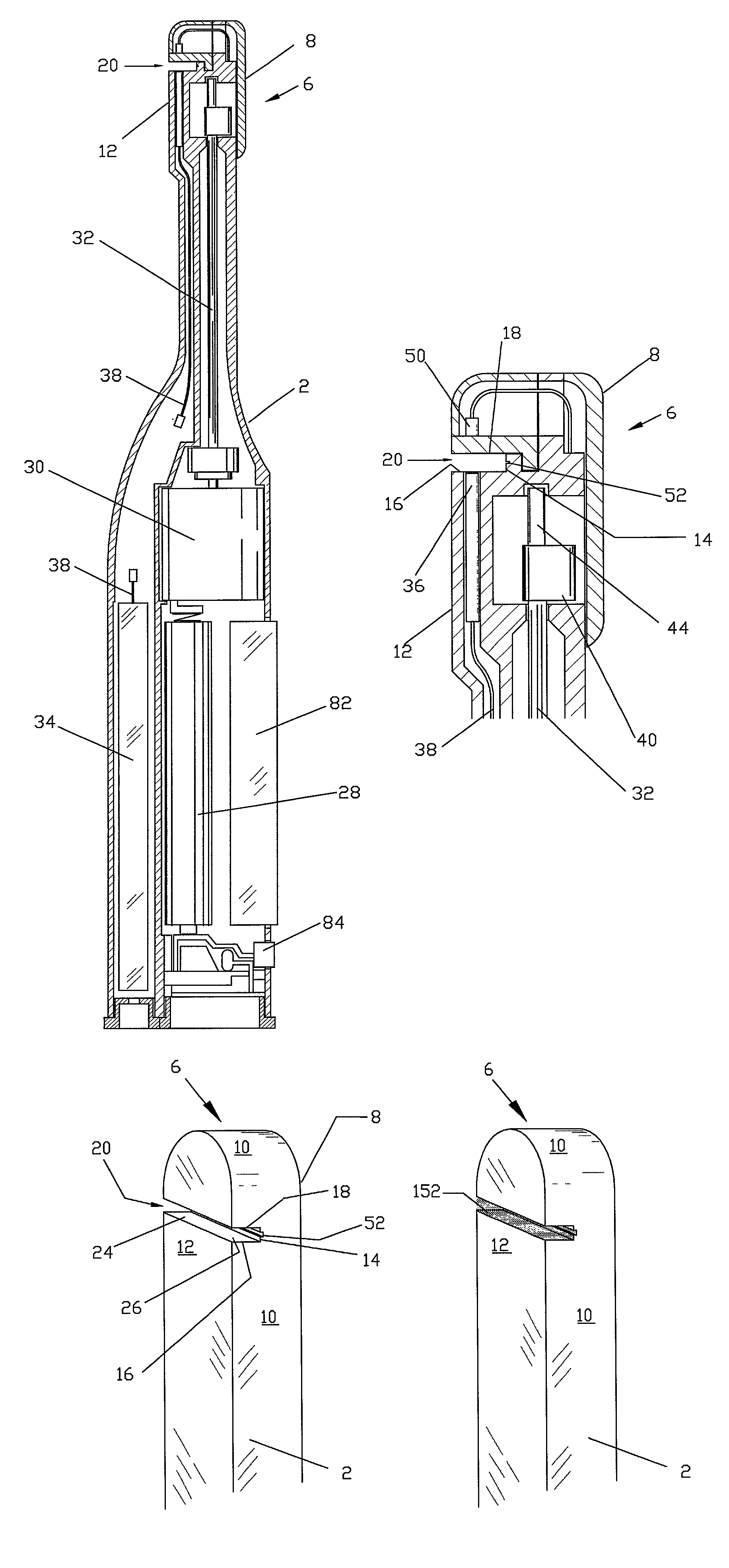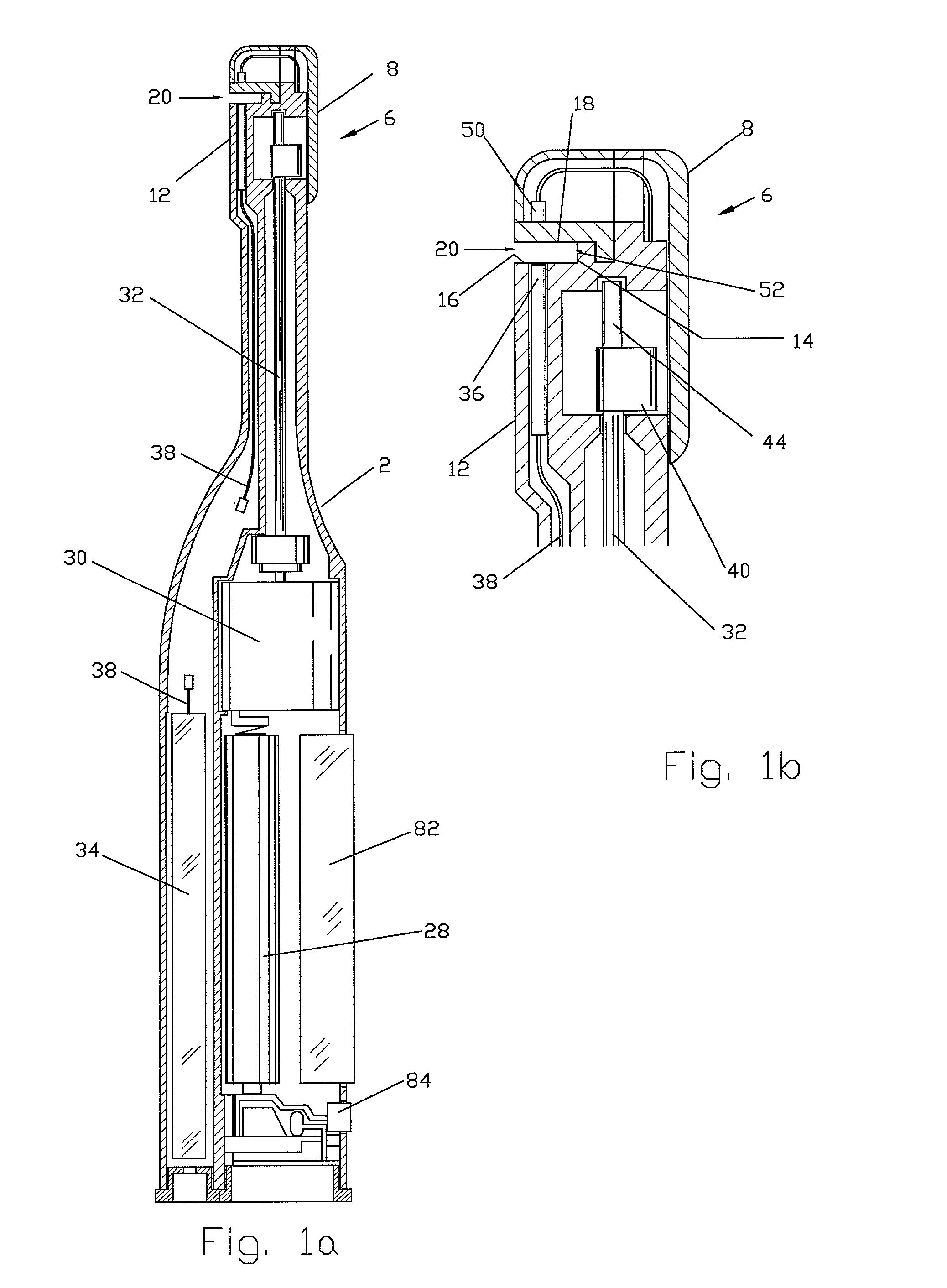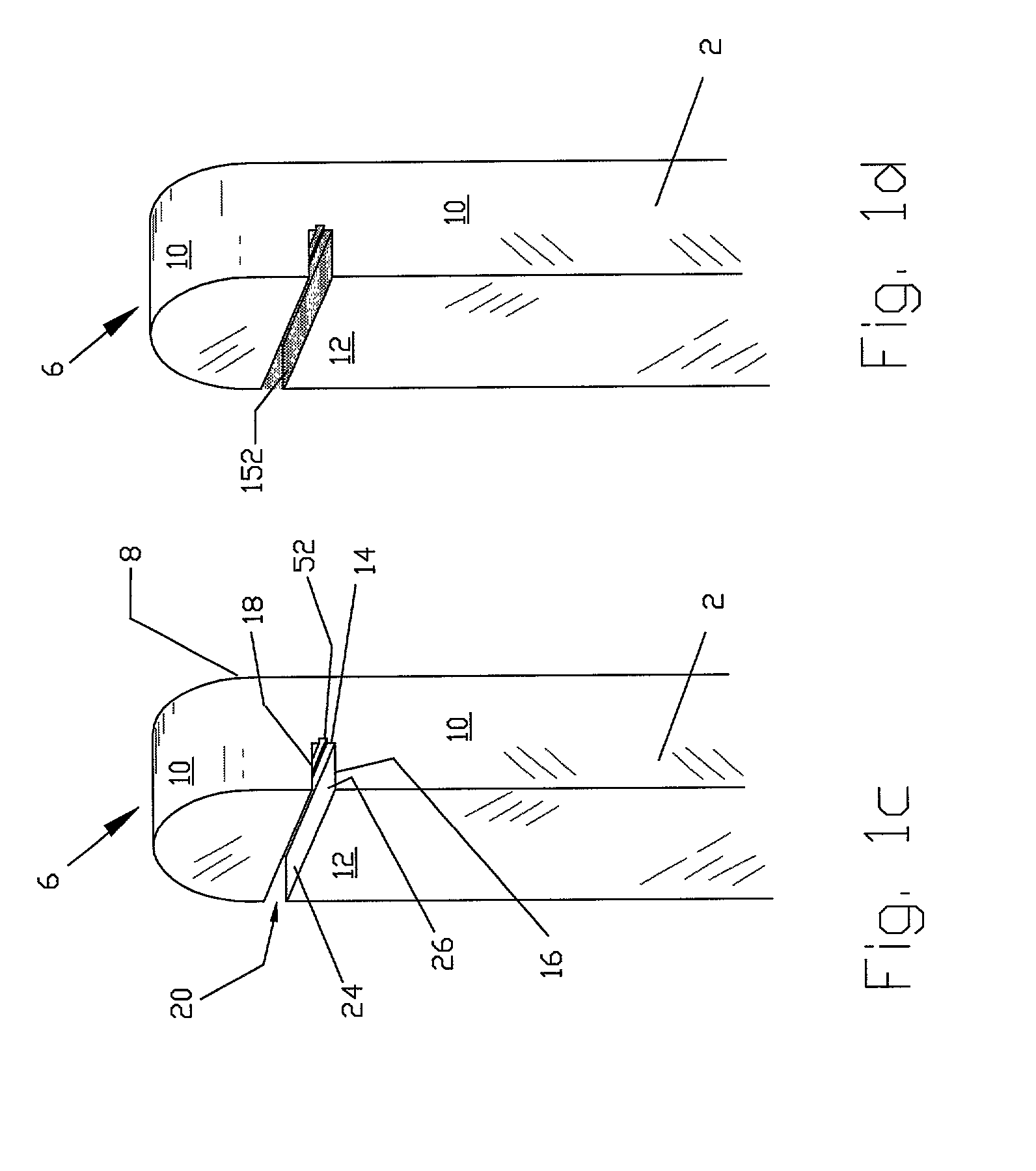Handheld diagnostic device with renewable biosensor
a biosensor and diagnostic device technology, applied in medical science, vaccination/ovulation diagnostics, packaging, etc., can solve the problems of measurement and reading errors, the flow path of the device is not an open channel type to enable cleaning and reuse of the device, and the use of visible and infrared spectrometers which are too complex to be practical for a handheld diagnostic devi
- Summary
- Abstract
- Description
- Claims
- Application Information
AI Technical Summary
Problems solved by technology
Method used
Image
Examples
Embodiment Construction
[0077]FIGS. 1a, 1b, and 1c show a handheld diagnostic device having handle 2 and test head 6. The test head has top surface 8, edge surface 10 and bottom surface 12. In a preferred embodiment of the invention, open test channel 20 is recessed in bottom surface 12 and traverses the width of test head 6. The open test channel has an upper channel wall 18 and a lower channel wall 16 as well as a base 14, all of which form a front opening 24 which is opposed to base 14. Test channel 20 also has two side openings 26, which are opposed to each other on the edge surfaces 10 of the test head. The channel gap between the upper and the lower channel walls is defined by front opening 24 and side opening 26. It is optimally designed with a width narrow enough for inducing capillary flow and for holding body fluid sample within the open channel but sufficiently wide to allow for the passage of cleaning water to flush out the fluid sample inside the test channel. Vent groove 52 is situated along ...
PUM
 Login to View More
Login to View More Abstract
Description
Claims
Application Information
 Login to View More
Login to View More - R&D
- Intellectual Property
- Life Sciences
- Materials
- Tech Scout
- Unparalleled Data Quality
- Higher Quality Content
- 60% Fewer Hallucinations
Browse by: Latest US Patents, China's latest patents, Technical Efficacy Thesaurus, Application Domain, Technology Topic, Popular Technical Reports.
© 2025 PatSnap. All rights reserved.Legal|Privacy policy|Modern Slavery Act Transparency Statement|Sitemap|About US| Contact US: help@patsnap.com



